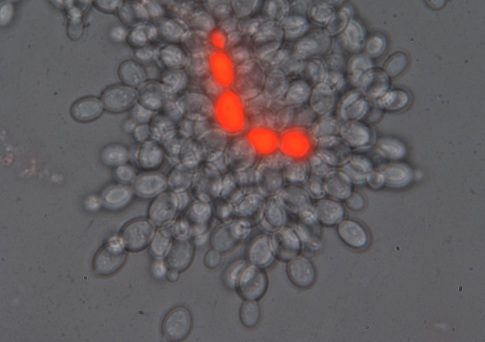We're open daily this holiday! View holiday hours
Science News
Evolution of Multicellularity
January 17, 2012

In the beginning, life took the form of simple, single-celled organisms. Then, at some 25 different points in Earth’s history, single-cell life evolved into multicellular life, such as you and me and other animals and plants. But how did it happen?
Good thing scientists love a mystery, and the origin of multicellularity sets the stage for a great mystery… Fade up on Will Ratcliff and Michael Travisano, sitting in their University of Minnesota lab, drinking coffee, chatting. Then and there, they decided that bridging the famous multicellularity gap would be “just about the coolest thing we could do,” recalls Ratcliff.
They decided to give it a try. And, as it turns out, it wasn’t actually that difficult. Using yeast cells, culture media and a centrifuge, it only took them one experiment conducted over about 60 days. Their findings were published yesterday the Proceedings of the National Academy of Sciences.
The two researchers chose brewer’s yeast or Saccharomyces cerevisiae, a species of yeast used since ancient times to make bread and beer, because it is abundant in nature and grows easily. They added it to a nutrient-rich culture media and allowed the cells to grow for a day in test tubes. Then they used a centrifuge to stratify the contents by weight. As the mixture settled, cell clusters landed on the bottom of the tubes faster because they are heavier. They removed the clusters, transferred them to fresh media, and grew them up again. Sixty cycles later, the clusters—now hundreds of cells—looked roughly like spherical snowflakes. (Check out these “snowflakes” in action here.)
Analysis showed that the clusters were not just groups of random cells that adhered to each other, but related cells that remained attached following cell division. That was significant because it meant they shared a genetic heritage, which promotes cooperation. When the clusters reached a critical size, some cells essentially committed suicide (apoptosis) to allow offspring to separate. The offspring reproduced only after they attained the size of their parents.
“A cluster alone isn’t multicellular,” Ratcliff said. “But when cells in a cluster cooperate, make sacrifices for the common good, and adapt to change, that’s an evolutionary transition to multicellularity.”
Probably not how it happened outside of the laboratory, billions of years ago, but an impressive result nonetheless…
The research duo’s next steps will be to look at the role of multicellularity in cancer, aging, and other critical areas of biology.
“Our multicellular yeast are a valuable resource for investigating a wide variety of medically and biologically important topics,” Travisano said. “Cancer was recently described as a fossil from the origin of multicellularity, which can be directly investigated with the yeast system. Similarly the origins of aging, development, and the evolution of complex morphologies are open to direct experimental investigation that would otherwise be difficult or impossible.”